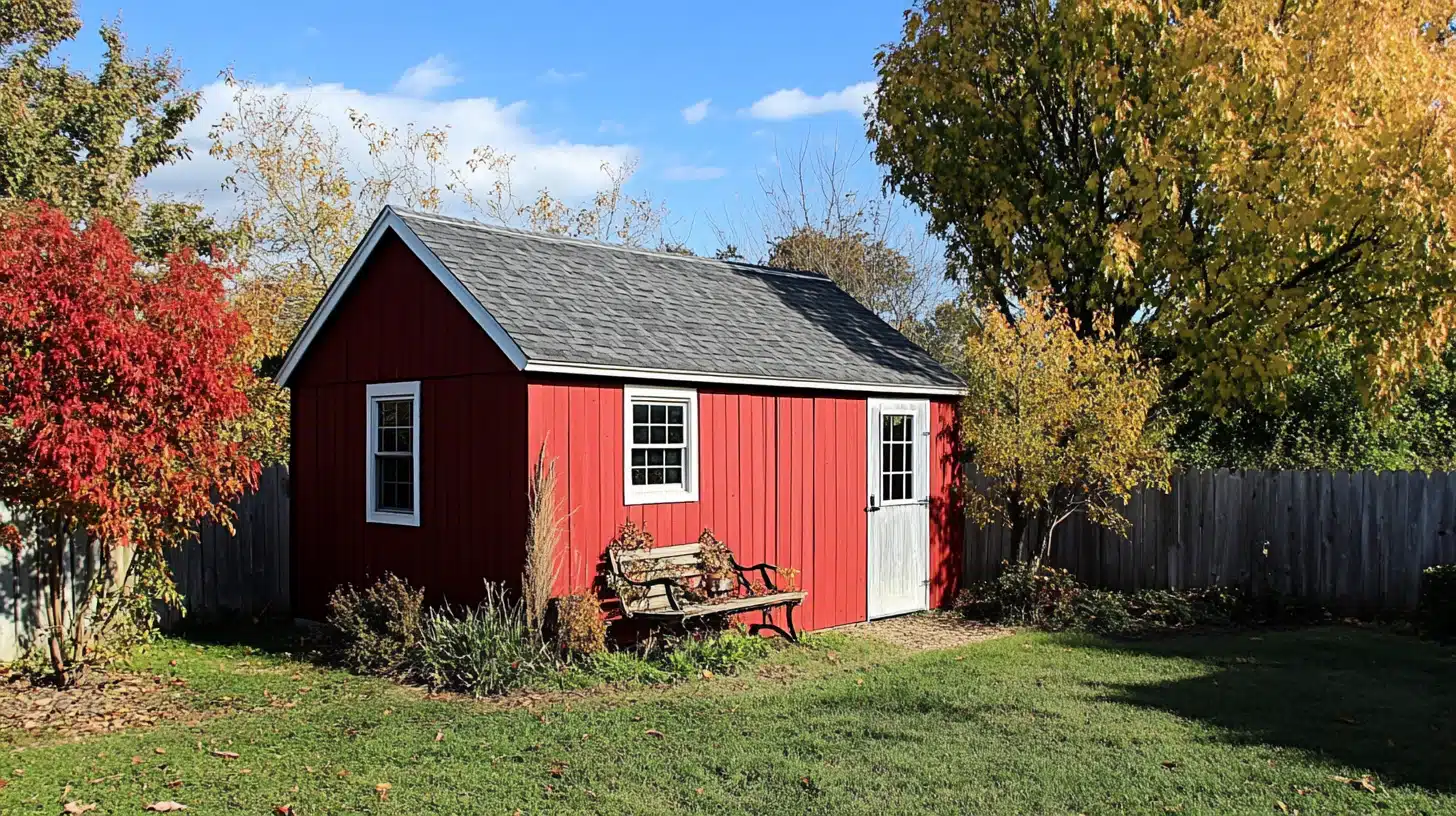As the rainy season approaches, it’s essential to maintain your backyard shed to ensure it remains in top condition. Wet weather can affect your shed’s appearance and durability if not properly cared for.
This blog post will provide practical tips to protect your shed from moisture damage, prevent mold growth, and keep it looking great throughout the year’s wettest months.
With a little effort and attention, your backyard shed can withstand the elements and continue to serve as a valuable outdoor space.
Inspecting Your Shed for Leaks and Damage
Backyard sheds should be regularly inspected for leaks and damage, especially before the wet season begins. Check the roof for missing shingles or cracks, and ensure the walls and floor are free from gaps or rot. Pay close attention to windows and doors for any broken seals or signs of water intrusion.
Identifying and addressing these issues early can prevent more extensive damage and maintain the overall integrity of your shed. Don’t forget to examine the shed’s foundation for any signs of water pooling or erosion, which can compromise the structure’s stability.
Ensuring Proper Drainage Around Your Shed
Ensuring proper drainage around your backyard shed is crucial to prevent water damage. Start by checking the ground slope; it should direct water away from the shed. Install gutters and downspouts to channel rainwater away from the foundation.
To enhance drainage, consider creating a gravel trench or French drain around the shed’s perimeter. Regularly clear debris from these drainage systems to maintain efficiency. A waterproof membrane under the shed can protect it from moisture seeping up from the ground.
Sealing and Weatherproofing Your Shed
To protect your backyard shed from the elements, apply a high-quality sealant to all exterior surfaces, focusing on seams, joints, and any areas where different materials meet. Use weatherproof paint or stain to create an additional barrier against moisture.
Ensure all windows and doors are fitted with weatherstripping to prevent water intrusion. Apply caulk around window frames, door frames, and other openings to seal out drafts and moisture. Regularly inspect and reapply these protective coatings to maintain their effectiveness throughout the rainy season.
Organizing and Protecting Shed Contents
Organize the contents of your backyard shed by using shelving units and storage bins to keep items off the floor and away from potential water damage. Store tools and equipment in waterproof containers, and hang frequently used items on hooks for easy access.
Elevate heavy or bulky items on pallets or sturdy platforms. Additionally, consider using desiccant packets or moisture absorbers inside the shed to minimize humidity and protect stored items from dampness. Regularly check for signs of mold or mildew and clean any affected areas promptly to maintain a dry and organized space.
Cleaning Gutters and Downspouts
Regularly cleaning your gutters and downspouts is essential to maintain proper water flow and prevent overflow that can damage your backyard shed. Remove leaves, twigs, and other debris to ensure water is directed away from the shed’s foundation. Use a garden hose to flush out any remaining dirt or obstructions.
Check the gutters and downspouts for any possible indication of rust, leaks, or loose connections, and make necessary repairs to keep them functioning effectively. This maintenance routine will help protect your shed from potential water damage during heavy rains.
Regular Roof Maintenance and Repair
Inspect your shed’s roof regularly for signs of damage, such as missing shingles, cracks, or warping. Addressing these issues promptly can prevent leaks and water damage. Clean off accumulated debris like leaves and branches that can trap moisture and cause rot.
Try applying a waterproof coating to the roof for added protection. Cut any overhanging tree branches that could damage the roof during storms. Regular maintenance will ensure your shed’s roof remains sturdy and watertight during the year’s wettest months.
Ventilation and Airflow Management
Proper ventilation and airflow are vital to prevent mold and mildew growth in your backyard shed during the wet season. Vents should be installed near the roof and at the shed’s base to facilitate air circulation. Use vented louvers or soffit vents to improve airflow without compromising security.
Keep the shed doors and windows open periodically to allow fresh air, reducing humidity levels. If your shed is electricity-powered, consider using a small fan or dehumidifier to enhance ventilation.
Seasonal Landscaping Around Your Shed
To strengthen the appearance and functionality of your backyard shed during the wet season:
- Consider updating your landscaping.
- Plant water-tolerant shrubs and flowers around the shed to help absorb excess moisture.
- Mulch garden beds to retain soil stability and reduce erosion.
- Create a small gravel path leading to the shed to prevent muddy walkways.
- Prune nearby plants to ensure they don’t obstruct ventilation or come into contact with the shed’s exterior.
Proper seasonal landscaping can improve drainage and keep your shed neat and well-maintained.
Properly maintaining your backyard shed during the wettest months is crucial to ensure its longevity and functionality.
Taking these steps will not only preserve the shed’s appearance but also enhance its usability year-round.








